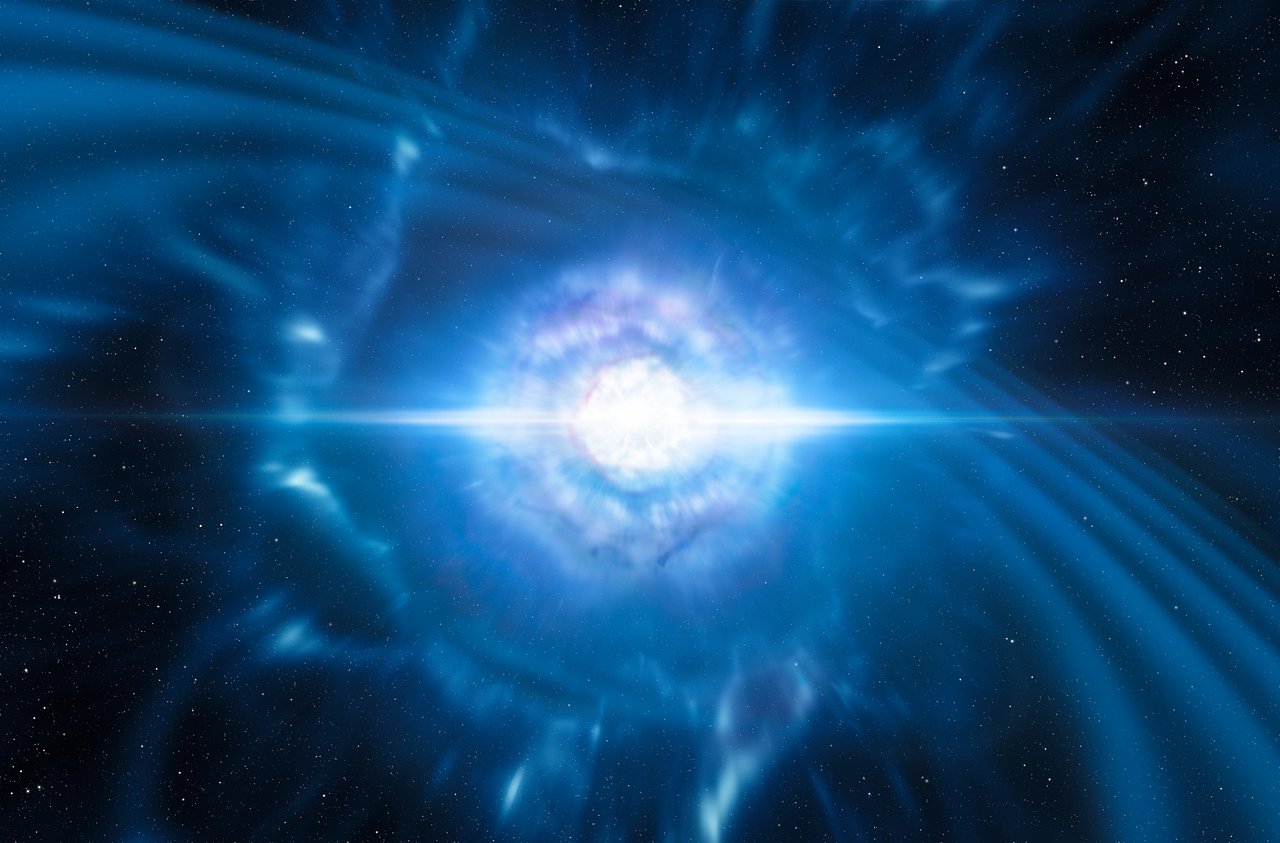The record-breaking GRB originated from a nearby but strange galaxy — which may be one of the places in the universe where gold forms in greater numbers.
A kilonova was first detected by NASA’s Hubble Space Telescope in 2013 and means such an event, in which two very dense objects merge. The object in question could be two neutron stars, or even a neutron star and a black hole — either way, the merger is accompanied by a brief gamma-ray burst (GRB). A GRB usually lasts only a few seconds, followed by afterglows in the visible light spectrum or in the infrared – the latter can last for a few hours or even a few days. A kilonova is interesting for two reasons (besides the fact that we generally like supermassive explosions): One is that heavy chemical elements such as gold or platinum can form and scatter throughout the universe in the process. The other is that the gravitational waves that appear during the event confirm Albert Einstein’s suggestion.
The kilonova subject of this article was first detected in December 2021 by NASA’s Neil Gehrels Swift Observatory and the Fermi Gamma-Ray Telescope. Since then, researchers have been trying to classify the explosion and understand its source – Independent reports. This event was particularly significant because it involved an unprecedentedly long gamma-ray burst that lasted 50 seconds. After the detection, the researchers immediately tried to determine the source of the GRB with the help of the aforementioned aurora. The discovery is therefore very important, because a gamma-ray burst that lasts for so long, nearly a minute, has not been detected before – and, according to scientists, all this may cause a paradigm shift in the study of GRBs.
According to assumptions, the cause of the standard explosion could be the collapse of a massive star, but it cannot be ruled out that a black hole ripped a neutron star apart. However, it is not only the length of the explosion that is unusual, but also the galaxy in which the kilonova event occurred – since it is a relatively nearby galaxy, the researchers have been able to study it well, and accordingly, the galaxy is young and stars are still being born. Which means it’s the exact opposite of the other nearby galaxy where such an event has been detected.
The researchers also hope that the James Webb Space Telescope will also help study the kilonova, whose sensitive spectrograph may help prove that the heavier chemical elements mentioned above were indeed formed in large numbers during such events.
(photo: Flickr/European Southern Observatory)












































